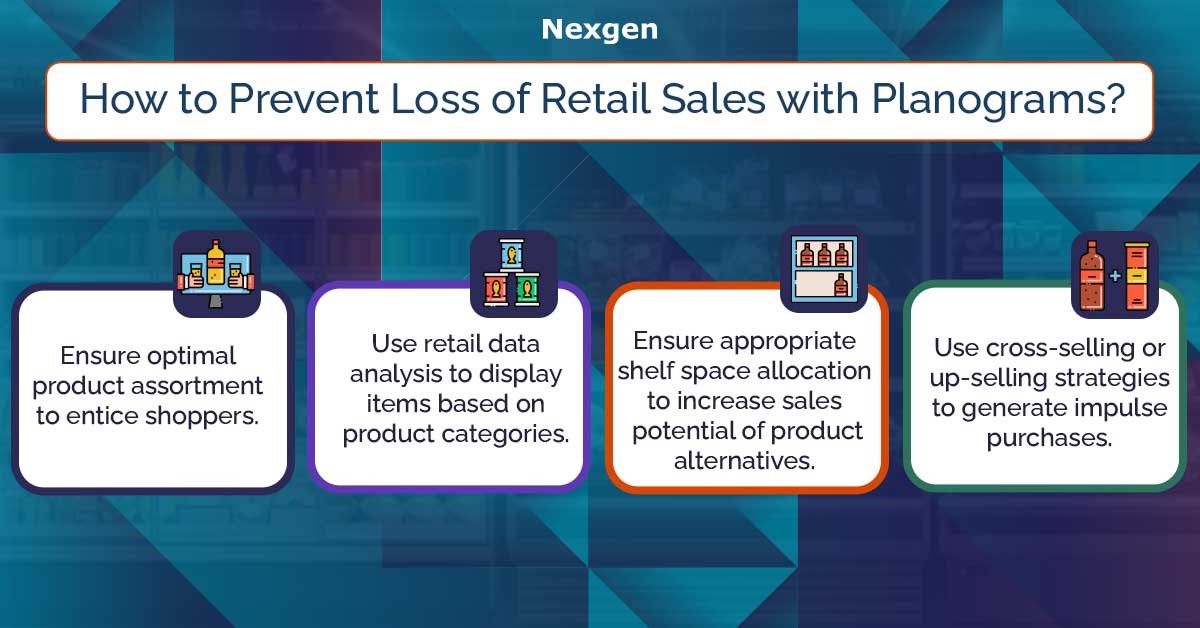Most retailers share the goal of driving more customer traffic and continuing to bring customers back to their stores. But there is a second hurdle that occurs in that goal: what happens when your sales are dropping, and shoppers are not making the most of your store sales? You should consider the causes as soon as you notice such changes. Sales might decrease for several reasons, including disorganized shelves, poor inventory management, and doomed display ideas. The only way to increase sales is to address these issues with an efficient retail strategy. One such strategy is implementing visual merchandising planograms.
Role of Planogram in Fixing the Loss of Sale
Planograms are visual merchandising tools that assist retailers in effectively planning and executing store shelves. This aids retailers in achieving optimal product assortment, the right product selection, and accurate stock estimation for the shelves. A planogram in retail also incorporates effective inventory control, store layout design, and visually appealing displays to increase sales. So, let us look at some of the reasons why sales are declining and how planograms can help you enhance sales:

- Failing to offer an enticing product selection:: It is simple that if you fail to give the shopper the products they want, you will fail to make a sale. Therefore, it is crucial to manage inventory well and choose the ideal products for each store shelf. However, how can a retailer determine precisely what is needed for their store? This is where planogram software comes in handy because it uses retail data analysis to plan and implement product placement on shelves. This increases the likelihood of sales and decreases stockouts by displaying products on shelves in a variety of pricing, categories, sizes, and colors.
- Not suggesting product alternatives: The right product selection and stock are vital for retail stores. No store can offer the shopper everything at once, but the available product selection can provide them with sufficient alternatives. If your shopper is looking for a dress and does not find an appropriate one in blue, there should be an option to choose other colors instead. To encourage customers, most stores pair items like tea with coffee, pens with pencils, and butter with margarine.
- Failing to analyze retail data: Stocking the right products and merchandising them rightly on store shelves can entice your customers. Imagine, for example, that your customers are enjoying a new variety of cleansing product. The demand for such products will increase over time. Therefore, retailers need to stock such products and take full advantage of the sales potential of these products by considering the shelf space allocation with data-driven planograms. Planogramming will help you place such products on store shelves by analyzing the retail data efficiently, and this will increase your store sales.
- Not cross-selling or upselling products: You can use cross-selling or upselling strategies to entice shoppers and prevent a loss of sales. Using cross-selling strategies can complement or supplement the purchases your customers have made. For example, placing protective phone cases beside the phones can boost sales. Upselling strategies can increase your shopper’s value by encouraging them to add on services or purchase a more expensive model. For example, if a customer visits your furniture store looking for a bedside table, and you sell them a whole bedroom set instead to generate last-minute sales.
Overview of Nexgen POG
Nexgen POG is a robust and user-friendly cloud-based visual merchandising tool. It is designed for quick and efficient planogramming with minimal effort. Planogram in retail can be designed by easily dragging and dropping the products. The multi-device compatibility feature of POG allows you to obtain, share and edit planogram on any device, including your phone. It helps in designing store-specific planograms for increased product visibility and sales.
Get Your Free Trial Now!